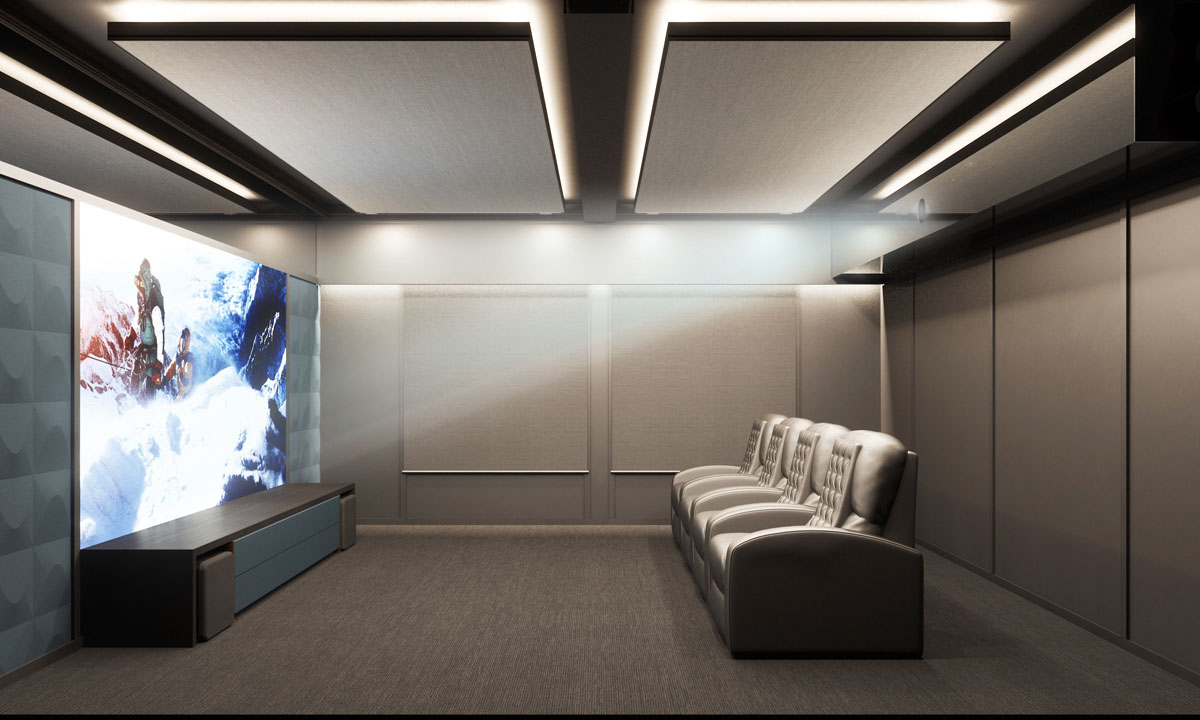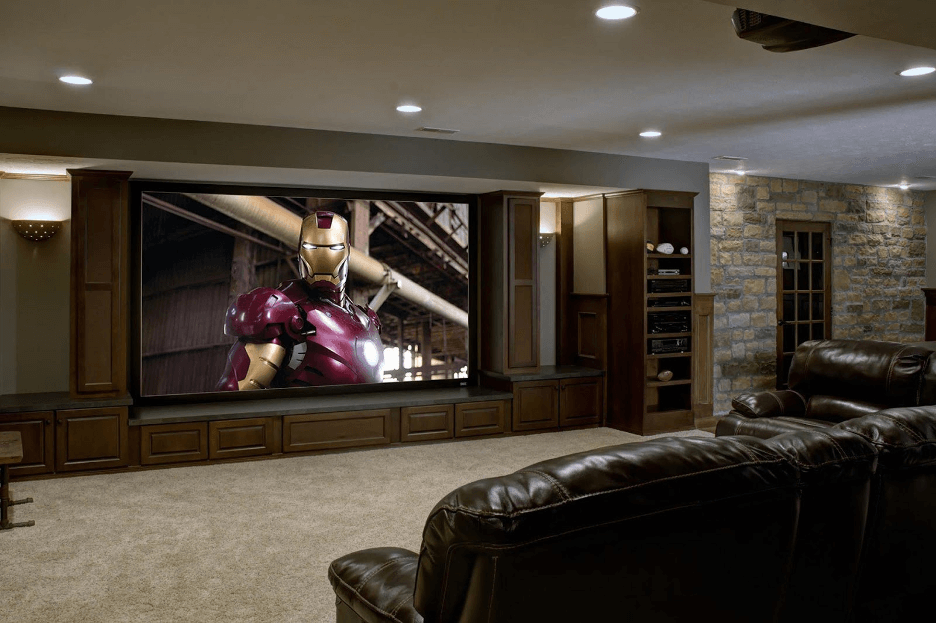How to Discover the Top Home Theater Tampa Installation Professionals
Wiki Article
Home Theater 101: Every Little Thing You Required to Know for a Cinematic Experience in the house
Developing a home cinema that equals the motion picture experience of an industrial theatre involves mindful factor to consider of several components, consisting of screen selection, sound systems, and space layout. Whether you are contemplating the optimal screen size or the details of surround sound, recognizing these basics is important.Choosing the Right Screen
When establishing a home cinema, choosing the right display can make or break the watching experience - home theater design tampa. The display acts as the focal point of your setup, influencing image top quality, seeing angles, and total aesthetic. Trick aspects to consider consist of screen kind, size, and resolutionFirst, figure out the appropriate screen size based on your space measurements and seating range. Next, choose between various screen kinds, such as fixed-frame, motorized, or retractable displays, each offering unique advantages.
Resolution is one more critical aspect. For a really immersive experience, think about a display designed for 4K and even 8K material, making certain intensity and clarity. Additionally, consider the screen's gain, which affects brightness and contrast; a higher gain can enhance brightness in well-lit areas, while a reduced gain might be extra suitable for darker settings.
Picking Sound Equipment
Audio tools is a critical component of any kind of home cinema system, significantly enhancing the total watching experience. The option of audio equipment can determine the depth, quality, and immersion of audio, critical for developing a motion picture environment.When selecting audio equipment, consider a border stereo, which usually includes a receiver, multiple audio speakers, and a speaker. A 5.1 or 7.1 channel system is recommended, where the first number stands for the audio speakers and the 2nd the subwoofer, providing an immersive soundscape. The receiver is the heart of the system, handling audio and video signals, and need to support contemporary formats like Dolby Atmos for an enhanced spatial experience.
Quality speakers are important; seek designs that supply a well balanced noise profile with good bass action. Floor-standing speakers can create richer noise, while bookshelf alternatives conserve space. In addition, take into consideration wireless alternatives for simplicity of installation, although wired systems usually provide exceptional efficiency.

Ideal Seating Plans
Creating an ideal home movie theater experience hinges substantially on ideal seating arrangements. The plan of seats plays an important duty in both convenience and checking out high quality, directly influencing the general cinematic experience.First, consider the display size and watching distance. An usual guideline is to position seats at a distance roughly 1.5 to 2.5 times the diagonal dimension of the screen. This makes certain an immersive experience without straining the eyes.
Following, altitude is vital. The back rows should be greater than the front to avoid blockages if your seating is in a tiered format. For level seating, ensure that the front row is not as well close to the display, which everybody has a clear line of vision.
In addition, think about the setup in terms of social characteristics. Group seats can enhance the common experience, while individual seats may be preferred for personal watching.

Last but not least, prioritize convenience with ergonomic seats that supports prolonged watching durations. Integrating reclining chairs or cushioned seats can dramatically enhance the experience, making the home movie theater a recommended destination for both enjoyment and leisure.
Lighting and Atmosphere
Reliable lighting and ambiance are necessary parts of a well-designed home movie theater, as they substantially affect the viewing experience. The ideal lights can boost the cinematic feel, while bad options can interfere with it. For optimum outcomes, consider a layered lighting method that consists of ambient, job, and accent illumination.Ambient illumination provides basic illumination, ensuring that the area is not entirely dark, which can strain the eyes. Dimmer buttons are highly advised, permitting modifications based upon the web content being checked out. Task illumination, such as wall sconces or floor lamps, provides practical illumination for activities like reading or navigating the space without disrupting the overall atmosphere.
Accent lighting can be used to highlight building functions or create centerpieces, including depth and passion to the space. LED strip lights behind screens or along racks can supply a subtle home theater design tampa radiance that improves the aesthetic experience without frustrating the audience.
:strip_icc()/heritage-lake-model-2524d1f5bc974300a65f3187a6ebd929.png)
Wiring and Installation Tips
A tactical wiring arrangement is vital for attaining optimal performance in your home cinema system. Appropriate electrical wiring not just makes certain high-grade sound and video clip signals however also boosts the general aesthetic of your area. Begin by drawing up your format, determining where each component will certainly be placed, including your display, speakers, and receiver.When selecting wires, focus on top quality, suitably assessed wiring to lower signal loss. HDMI cable televisions should be utilized for video links, while audio speaker cable ought to match the requirements of your speakers and amplifier. Choose in-wall rated cables to abide by safety requirements and maintain a clean appearance.

Final Thought
In summary, creating an extraordinary home cinema experience calls for mindful consideration of various elements, including screen selection, audio devices, seating plans, lighting, and wiring. By prioritizing these factors, a cinematic environment can be effectively duplicated, enabling for immersive checking out experiences that equal typical cinema setups.Producing a home movie theater that matches the cinematic experience of a commercial theatre includes careful factor to consider of several components, including screen choice, audio systems, and area format.When establishing up a home movie theater, choosing the right screen can make or damage the checking out experience. Next, pick in between numerous display kinds, such as fixed-frame, motorized, or retractable screens, each offering unique advantages. For a truly immersive experience, consider a screen designed for 4K or even 8K material, ensuring sharpness and clarity.In summary, creating a remarkable home theater experience calls for careful factor to consider of various elements, consisting of display choice, audio tools, seating plans, illumination, and electrical wiring.
Report this wiki page